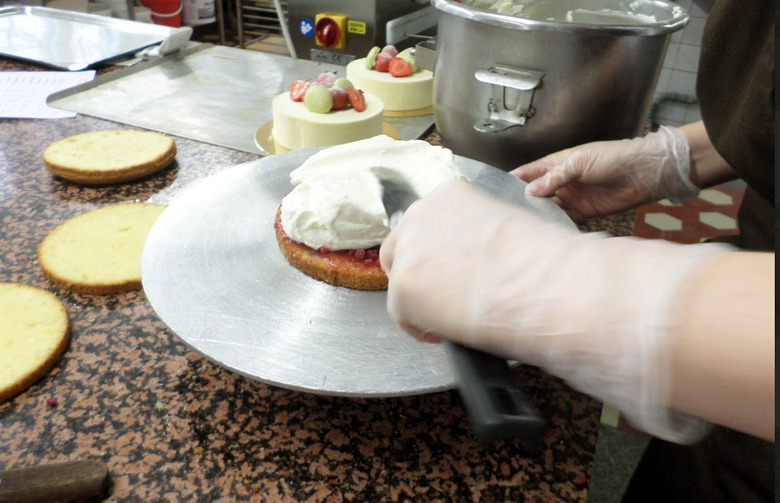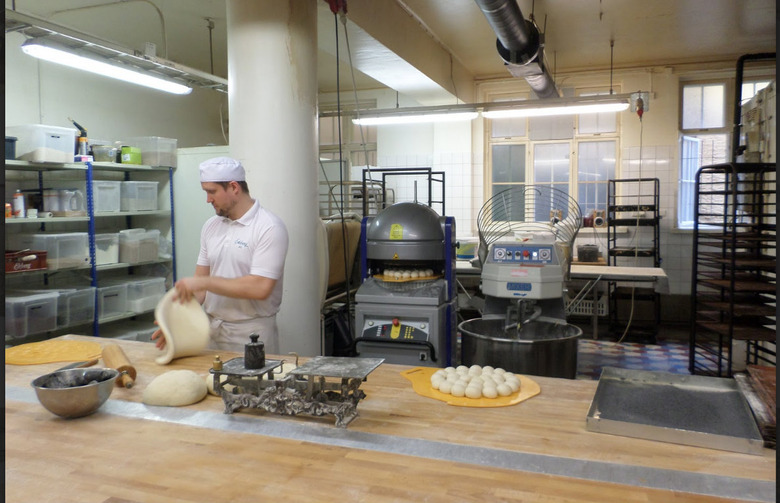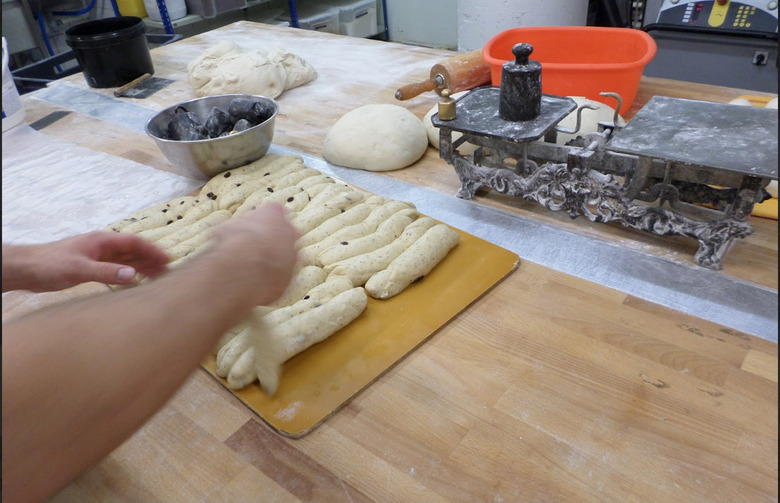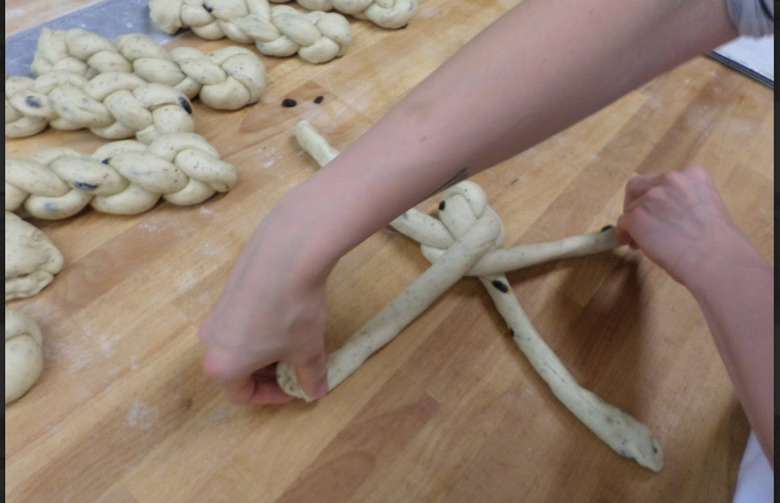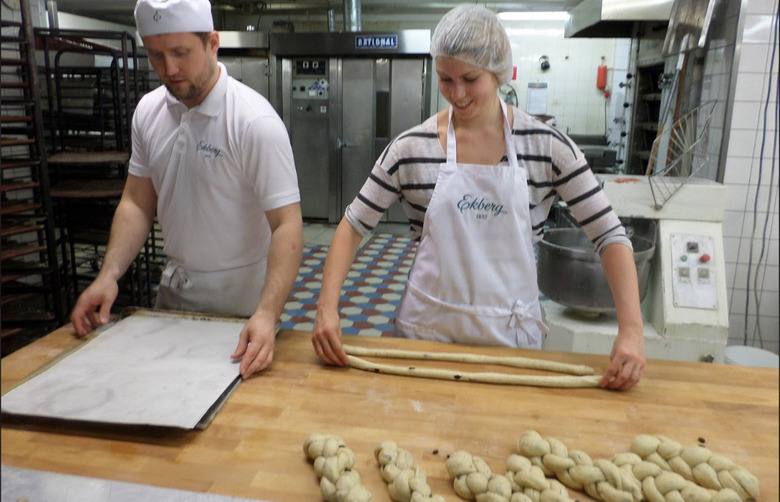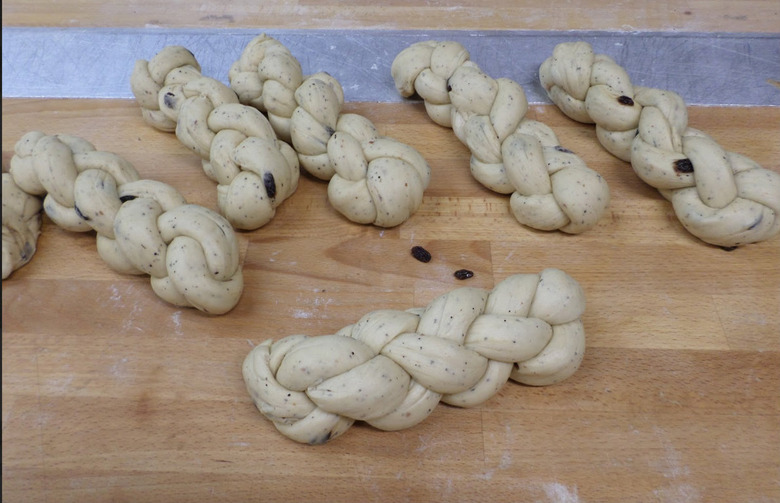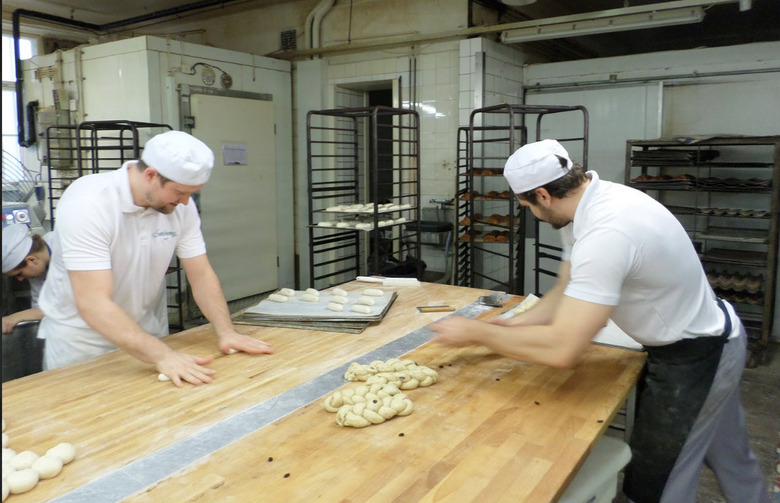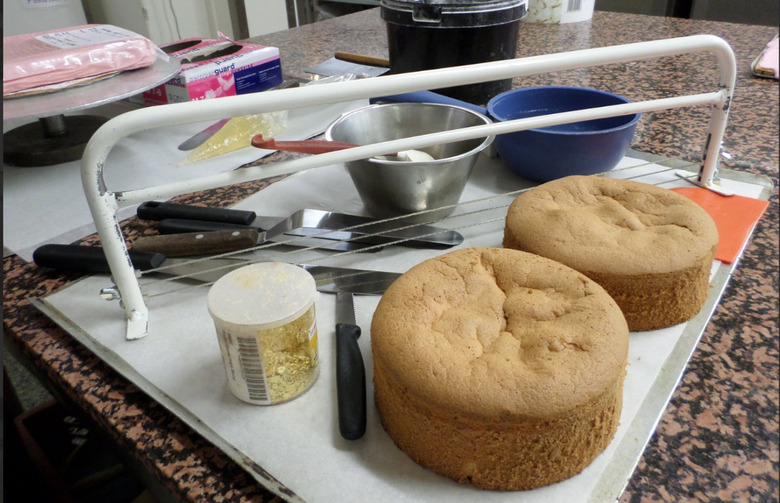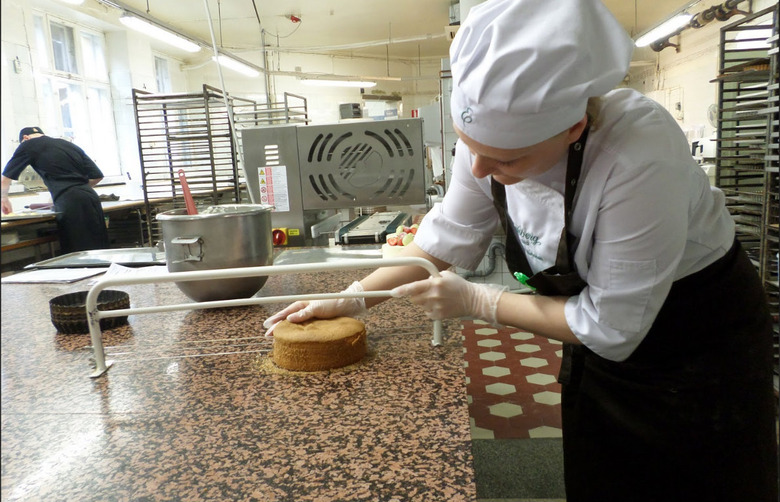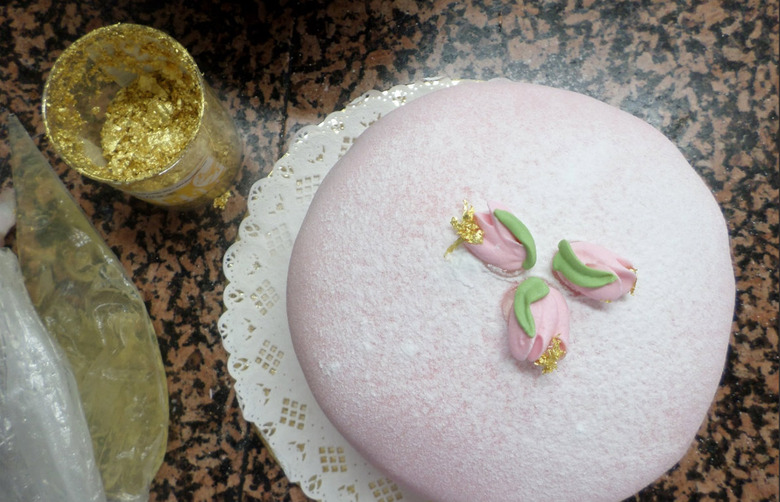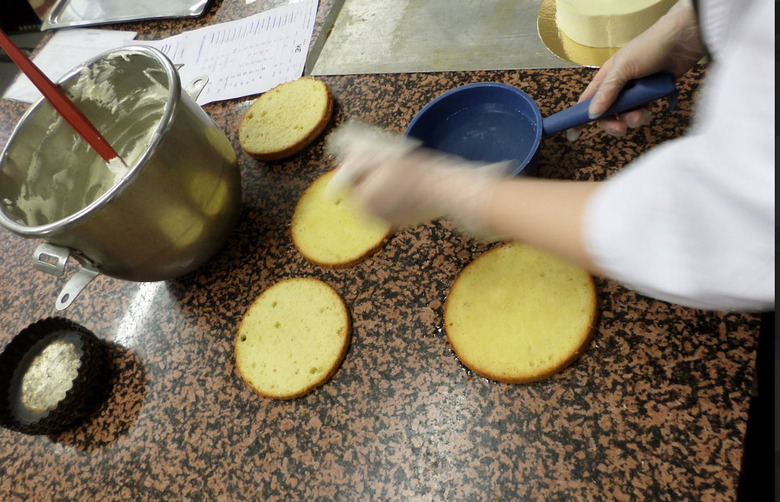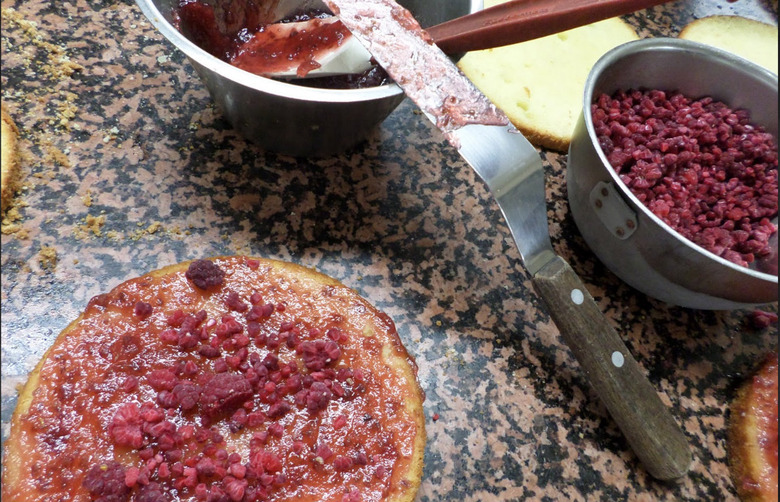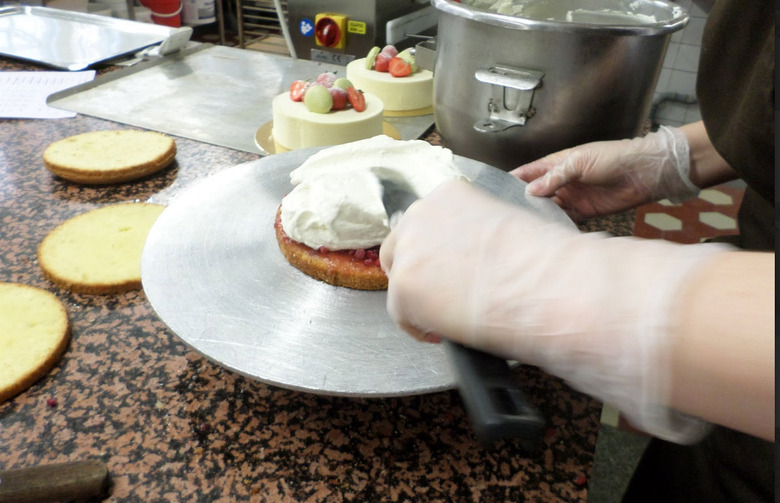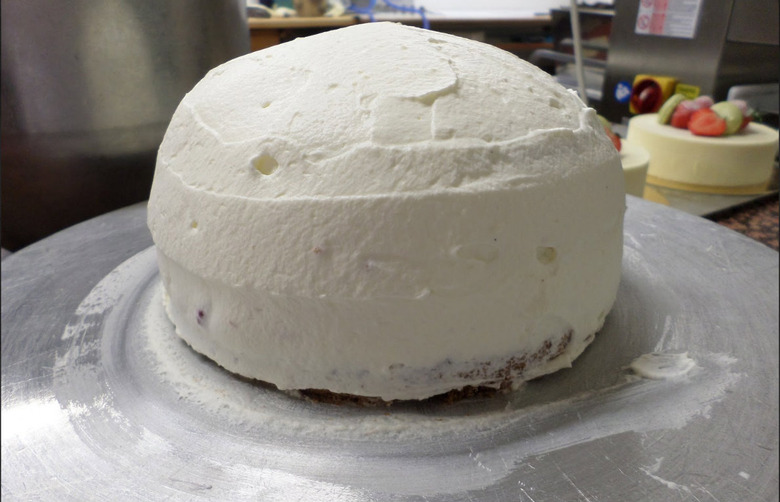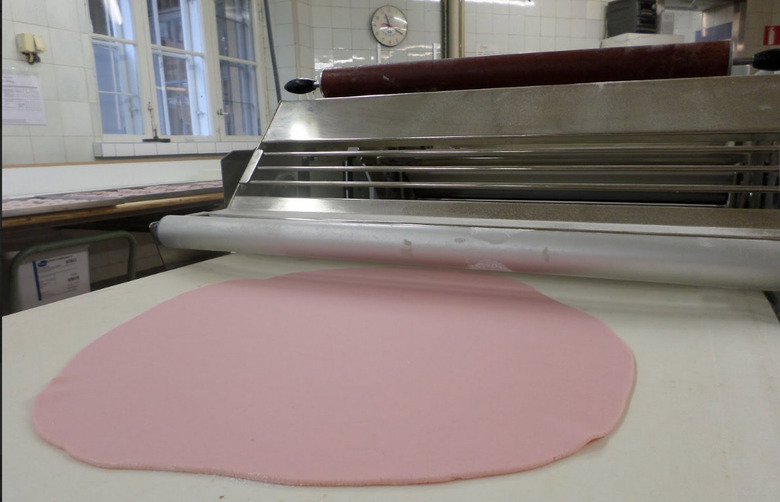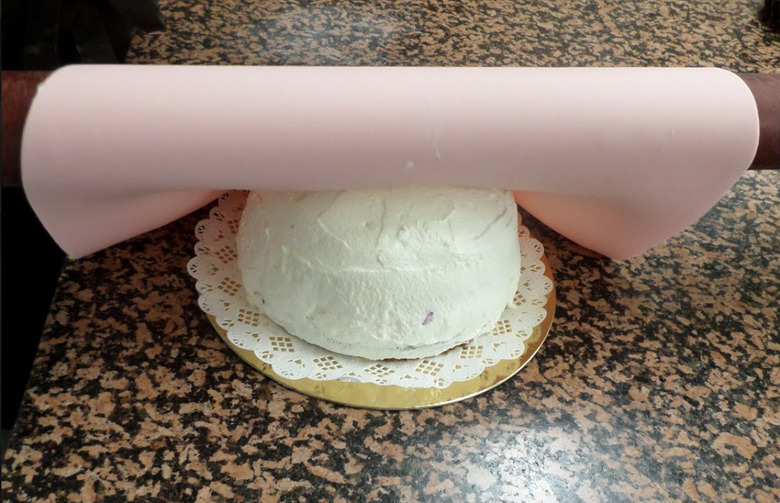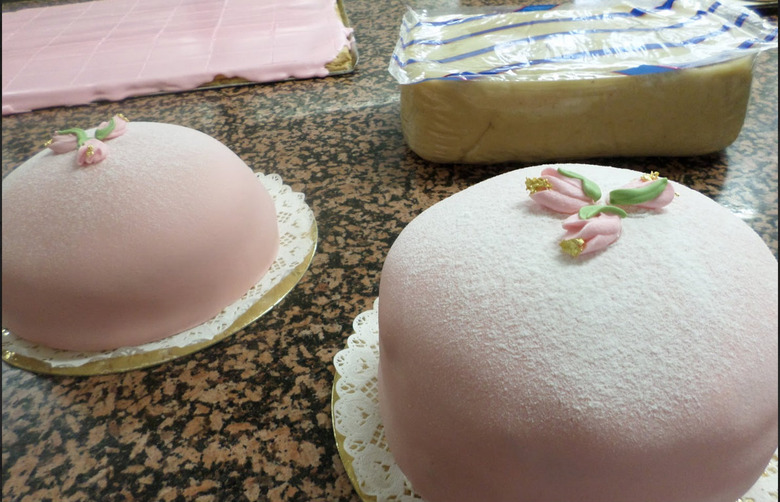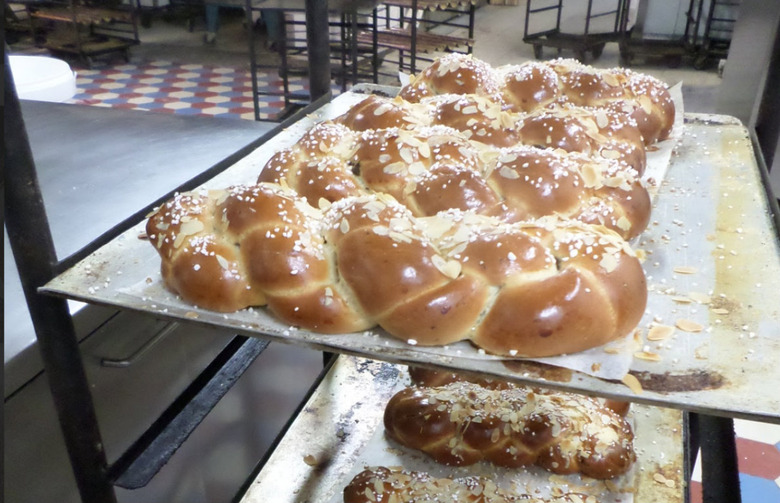A Class At Café Ekberg, Finland's Oldest Bakery
1. Café Ekberg’s Bakery
The baking room in the back of Café Ekberg. All of the breads and buns sold at the cafeteria and bakery are made here.
2. Dough Ready to Go
The beginning stages of a braided bun. The classic dough is studded with raisins — and cardamom, of course.
3. Braiding the Bun
Head baker Sergei Muratov patiently demonstrated the process of braiding for me, and I tried to mimic it.
4. Baking
After a few rounds the baking definitely got easier, but which part of the dough to fold over which still just didn't quite make sense in my head.
5. Ready for the Oven
In the end, I made eight whole braided buns. They may not have been pretty enough to represent the café brand, but in my eyes looked pretty good.
6. Bakers in Action
While I made just eight braided buns, these pros had banged out probably three times as many baked goods (head baker Sergei Muratov is at the right).
7. Princess Cake
While the buns were baking, I moved over to the pastry side of the bakery to attempt to assemble a princess cake. This classic cake is a favorite of many in Finland and Sweden (my little sister and grandfather included), and consists of plain sponge cake layered with raspberry jam and whipped cream, then covered with marzipan.
8. Cutting the Cake
Head pastry chef Susanna Suhonen had prepared the cake base, and I was put in charge of the building. Here she is showing how they cut the cake with a "cake saw" to get even layers.
9. Madeleine Cake
Ekberg's princess cake is normally covered with pink marzipan, different from the most classic version, which is covered in light green. The cake is here also called Madeleine cake, named after Sweden's princess.
10. Soaking the Cake
When cut, the cake layers are soaked with a mix of sugar and water. Proper soaking is important to get a deliciously moist cake.
11. Filling
At Café Ekberg, raspberry jam and frozen Finnish raspberries are spread on top of each layer, except the top one.
12. Layer of Cream
After the jam, whipped cream is spread evenly on each layer. To make it easier, the cake is put up on a rotating cake tray.
13. Ready to Be Covered
The challenge with the cake is to get a nice, round shape of whipped cream to cover the top layer. At some bakeries, the top layer is only filled with jam or left plain, but at Ekberg, it is always covered with a thick layer of whipped cream.
14. Preparing the Cover
The pink marzipan is prepared by flattening it out with a massive electric rolling pin.
15. The Hard Part
The hardest part in the cake-building process was to get the flattened marzipan nicely and evenly draped over the cake.
16. Finishing Touch
When the cover was successfully draped over and trimmed around the edges, it was time for a final touch with nothing less than sugar roses and edible golden leaves. To the left is pastry chef Suhonen's perfect cake — ready for the bakery — and to the right my extra-tall version. Since there was an extra layer of cake after the initial cutting, I thought I'd improvise and incorporate it in the cake.
18. Finished Buns
While making cakes, my braided buns had the time to bake. Here are the finished "loaves." And yes, both the buns and the cake were delicious.
